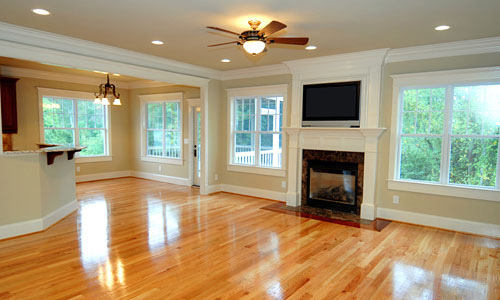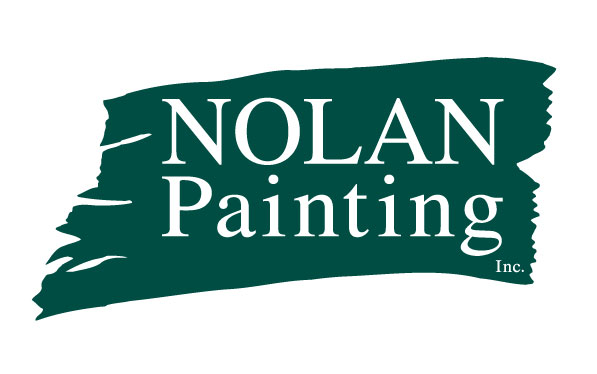Good Paint Can be Hard to Find: The Qualities Main Line Families Should Look For in Every Can


Here’s a question: if you were to ask anyone if they prefer gas or charcoal, everyone would have an opinion, right? People will tell you what kind of oil to put in your car, and what kind of food to buy for your family, so it’s weird that so many people think that paint is just paint, and they are all more or less the same. This is the kind of myth that leaves your friendly neighborhood painting contractor begging you to give your home the respect it deserves.
We know through years of experience that the quality of the paint you choose is probably one of the biggest factors in how satisfied you’re going to be with the results in the long term. Choosing a paint is like choosing lighting for your home – when faced with a maze of choices in the cluttered department of your local big-box retailer, the jumble can make you think they’ll all “do the job,” but it’s just a little more complicated than that.
Quality Benchmarks
By buying the cheapest paint you can find you might think that you’re making the most cost-conscious decision. The reality, though, is that it’s often a false saving. Thinner, cheaper quality resins in the paint give the paint an inferior power of coverage. What seems like a cost-saving buy can end up extending your project when you spend more time (and more coats of paint) covering the initial layers.
Really, what it comes down to is the chemistry in your colors. You might have noticed that the paint market is flooded with choices, and often the specifics of paint formulation aren’t made as clear to consumers as they should be. So, let’s talk about what’s in the can.
First you have to understand some terms, and it all comes down to these four: binders, thinners, pigments, and additives.
Binder: A binder is the material that remains in the paint after it dries – it’s what carries the pigment and creates the final film of color. The quality of binder in your paint determines how durable that final film is, and how well the film adheres to its surface. For example, with Sherwin Williams “Cashmere” (our go-to choice for home interiors), even the flat, low luster, and pearl finishes have a washable surface that holds up well under all conditions. The high-quality binder in this paint keeps it from flaking or from being marked when it needs a little clean-up.
Thinner: Thinner is the material that makes the paint fluid, or, you could say, “paintable.” It’s important to look at the quality of a thinner because this is what gives the paint a smooth finish and makes for easier application. It’s also important because the thinner evaporates as the paint dries, so if you choose a zero-VOC or lower-VOC paint, the thinner is the part of the paint that is effected; you’ll be buying a paint that doesn’t create toxic gasses as it evaporates! The Sherwin Williams “Cashmere” is a low VOC, and we also offer “Harmony”- a completely zero-VOC paint.
Pigment: If thinner is what makes paint “paintable” than pigment is what makes paint, well, paint – it’s the color that is held within the binder. It plays a role in determining how well the paint covers the wall, giving it that bright, solid sheet of color. Pigment can also play a role in how well the paint holds up over time. For example, you may have seen the studies of old master paintings; paints with an inferior quality pigment have faded over time, leaving the work of painters like Van Gogh and Matisse chalkier than they were originally. Okay, so your interior may not be an artistic masterpiece, but the same goes for your home paints – a quality paint will stay bright while paint with a lesser quality pigment will lose its color over time.
Additives: Just saying “additives” may sound pretty vague, but that’s probably because it really is just a broad term that refers to the extra materials in paint that make it easier to apply. Additives are actually what affect the thickness of the paint while you’re applying it, the amount of time it takes to dry, how evenly the color is spread throughout the paint (to avoid weird swirls and clumps), and how smoothly the final painted surface looks.
So, now that you have those terms, what do you do with them? What should you be thinking about when you are choosing a paint for your project? It all depends on exactly what you’re looking to accomplish with your paint project.
For example, look at the Matte vs. Glossy question. The tradeoff comes down to that great look you get with matte paint compared to the washability and durability of glossy paint. Since matte paints have more pigment and less binder, they may be more attractive, but they also tend to scar more easily, especially in a high traffic area like a garage, children’s playroom, or hallway.
Glossy paints have that protective binder, but less pigment, and the sheen also tends to highlight those annoying little irregularities on the wall much more than a matte paint does, so it’s important to consider the function of the space and which qualities are more important to you.
A paint’s washability is also generally determined by its gloss. A glossy paint is less prone to damage if you need to wash it with soap and water, whereas a matte surface could be marked and stained but is not as easy to clean. Some more expensive paints have a matte surface with greater washability than your average mattes, so this is always a good option for families with young children who still want a nicer matte finish in the living or dining room.
Durability & Marking
Whether your paint is matte or glossy, its durability is going to be affected by the quality of the pigment and binder in its formulation. A higher quality pigment stays brighter over time – it fades less in the sun, giving you a vibrant color that lasts. A strong, quality binder keeps your paint from peeling away from the primer and the surface of the wall. You’ve seen those square-shaped flakes coming off older walls, leaving colored skins about the thickness of a fingernail that scatter at the baseboard? Cheap binder. Don’t go there – investing in a quality paint up-front saves you time, money, and effort in the long-run.
Let’s Break out the Brushes & Get Rolling
Nolan Painting has been proudly painting homes along the Main Line with top-of-the-line paints since 1979. We take pride in keeping our customers informed and giving them the best choices on the market for their interior or exterior paint job. With paint quality especially, the complex world of chemical formulation can be a bit much to navigate on your own. Our color consultants and experienced painters can help guide you toward a paint that will look as great down the road as it does now. If you’re considering a home renovation, contact us today for a consultation.

